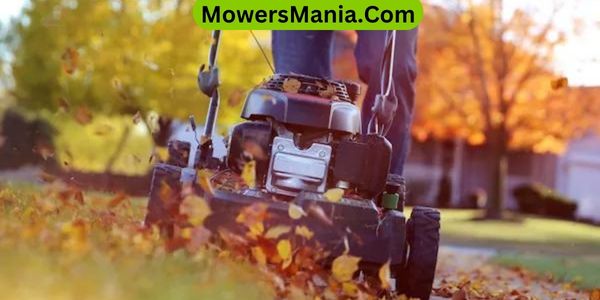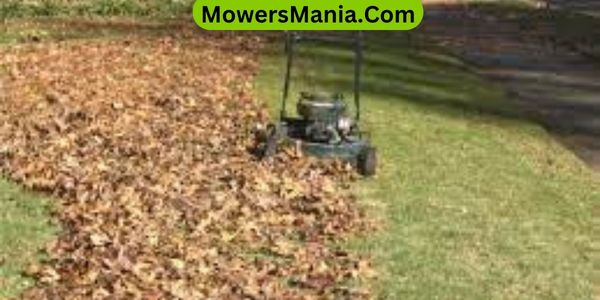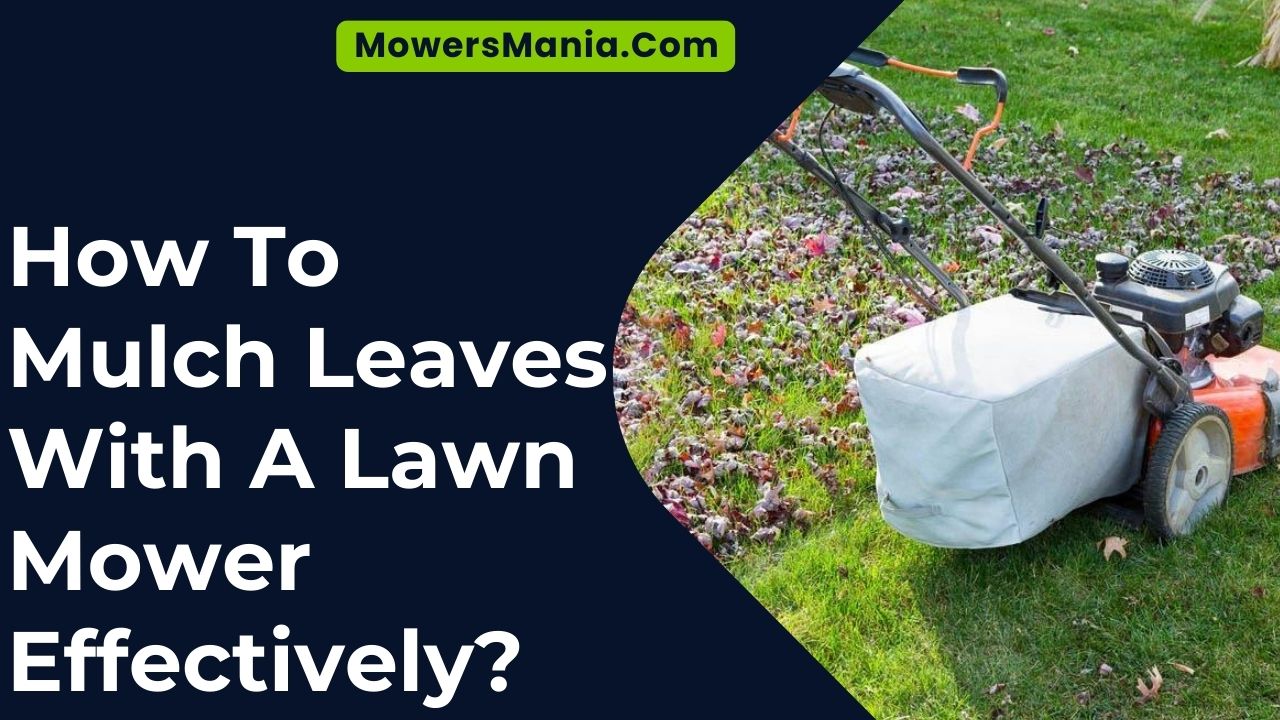You’ve got a yard full of fallen leaves, and you’re wondering how to mulch them effectively with your lawn mower.
Well, it’s actually quite simple. With the right technique, you can turn those leaves into nutrient-rich mulch for your lawn.

Just follow these easy steps to get the job done efficiently and without a lot of hassle.
Choosing the Right Lawn Mower
When mulching leaves with a lawn mower, it’s important to choose a mower that has adjustable cutting heights to effectively handle varying leaf densities. This feature allows you to customize the cutting height according to the volume of leaves, ensuring efficient mulching.
Look for mowers with easy-to-use height adjustment mechanisms, such as lever-operated or single-point height adjustments, which enable you to make quick changes as you move across different areas of your yard.
Additionally, consider mowers with powerful engines and sharp blades to efficiently mulch the leaves without clogging or leaving behind large clumps. Opt for models with mulching blades specifically designed to finely chop the leaves, promoting faster decomposition and nutrient absorption by the soil.
Moreover, choosing a self-propelled mower can significantly reduce the physical effort required, especially when dealing with large quantities of leaves.
Setting the Correct Mowing Height
To ensure effective mulching of leaves with your lawn mower, you need to set the correct mowing height based on the volume and density of the leaves in your yard.
Setting the mower at the right height ensures that the leaves are chopped into small pieces, allowing them to decompose quickly and providing essential nutrients to your lawn.
Refer to the table below to determine the ideal mowing height based on the amount of leaves in your yard.
| Volume of Leaves | Mowing Height |
|---|---|
| Light to moderate | 2-3 inches |
| Heavy | 3-4 inches |
| Very heavy | 4-5 inches |
Mowing Technique for Mulching Leaves

After setting the correct mowing height based on the volume and density of the leaves in your yard, mulching leaves with a lawn mower requires employing a specific mowing technique to ensure optimal results.
To effectively mulch leaves with a lawn mower, follow these essential mowing techniques:
- Overlap your mowing paths: When mulching leaves, overlap each pass slightly to ensure thorough leaf shredding. This helps in breaking down the leaves into smaller pieces, aiding in their decomposition.
- Mow at a slower pace: To ensure that the mower effectively shreds the leaves, mow at a slower pace than usual. This allows the mower’s blades more time to work through the leaves, resulting in finer mulch.
- Alternate mowing directions: Change the direction of your mowing path with each pass. This technique helps ensure that the leaves are evenly mulched from all angles, preventing any large patches of unshredded leaves.
Tips for Improving Mulch Quality
For better mulch quality, ensure that you evenly spread the shredded leaves across your lawn. This will help in achieving a consistent layer of mulch, allowing for better aeration and decomposition.
Here are some additional tips to further improve the quality of your mulch:
| Tips for Improving Mulch Quality | Benefits |
|---|---|
| Use a sharp mower blade | Clean, precise cuts on leaves for finer mulch |
| Mow when leaves are dry | Easier shredding and better distribution of mulch |
| Adjust mower height | Control the size of shredded leaves for optimal mulch |
| Avoid mowing over large sticks or debris | Prevent damage to your mower and ensure even mulching |
Lawn Care After Mulching Leaves

If you’ve just finished mulching leaves with your lawn mower, it’s time to focus on the next steps for maintaining a healthy lawn. After mulching, your lawn will benefit from some extra care to ensure it stays lush and green.
Here’s what you should do next:
- Rake and Remove Debris: After mulching, it’s important to rake the lawn to remove any remaining leaf debris. This will help prevent thatch buildup and allow the grass to receive adequate sunlight and air.
- Apply Fertilizer: Consider applying a slow-release nitrogen fertilizer to provide essential nutrients for your grass. This will promote healthy growth and help your lawn recover from the stress of leaf mulching.
- Watering: Proper watering is crucial after mulching leaves. Make sure to water your lawn deeply and less frequently to encourage deep root growth. This will help your grass withstand environmental stress and maintain its vibrancy.
Frequently Asked Questions [FAQs]
Can I Use a Regular Lawn Mower to Mulch Leaves, or Do I Need a Specific Mulching Mower?
You can use a regular lawn mower to mulch leaves, but a specific mulching mower may provide better results. The key is to adjust the mower height and use a slow, steady pace to effectively mulch the leaves.
What Types of Leaves Are Best for Mulching With a Lawn Mower?
You should use dry, brittle leaves for mulching with a lawn mower. They break down easily and create a fine mulch. Avoid wet or damp leaves, as they can clog the mower and make the mulching process less effective.
How Often Should I Mow Over the Leaves to Effectively Mulch Them?
You should mow over the leaves frequently to effectively mulch them. Regular mowing breaks down the leaves into smaller pieces, allowing them to decompose faster and enrich the soil with nutrients.
Are There Any Safety Precautions I Should Take When Mulching Leaves With a Lawn Mower?
When mulching leaves with a lawn mower, always wear eye protection, closed-toe shoes, and long pants. Clear the area of any debris or obstacles. Make sure to turn off the mower and disconnect the spark plug before cleaning or performing maintenance.
Can I Use the Mulched Leaves as Fertilizer for My Lawn, and if So, How Should I Apply Them?
Yes, you can use mulched leaves as fertilizer for your lawn. To apply, spread a thin, even layer over the grass. The leaves will decompose, adding nutrients to the soil and promoting a healthy lawn.
Conclusion
So, now you know how to effectively mulch leaves with a lawn mower.
By choosing the right lawn mower, setting the correct mowing height, and using the proper mowing technique, you can create high-quality mulch for your lawn.
Remember to follow up with proper lawn care after mulching to ensure a healthy and thriving yard.
Happy mulching!



